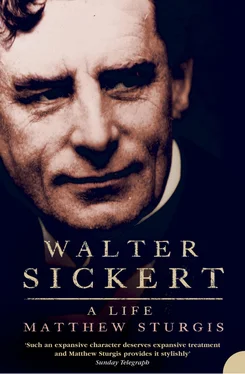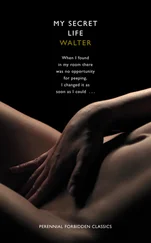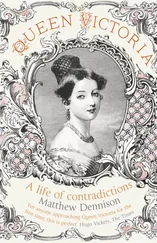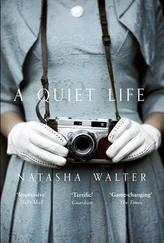* ‘Milk and butter are in a state of barbarism,’ reported the travel writer Edward Wilberforce. The butter was often rancid. As to the difference between milk and cream in Munich, ‘a long experience has shown me that cream is milk with water put in it, while milk is water with milk put in it’.
* The trust was set up on 29 June, between Mr and Mrs Sickert, Anne Sheepshanks, and three trustees, Augustus de Morgan, William Sharp, and George Campbell de Morgan (a copy is in the Sutton papers at GUL).
* ‘I remember an illustration in the Fliegende Blätter in the early sixties in which was depicted a little girl guiding her blind grandmother. Finding the road rather even, and therefore tedious, the child from time to time feigned an obstacle, a brick or stone, and said, “Granny, jump,” which the old lady obediently did. When someone remonstrated with the child, she answered, “My grandmother is mine; I may do what I choose with her.”’ ‘The Polish Rider’, New Age (23 June 1910).
My strongest memories of Walter as a boy are of his immense energy
& the variety & resourcefulness of his interests.
(Helena Sickert)
At the end of the summer of 1868 the Sickerts crossed the Channel and settled into a new home at 3 Windsor Terrace, Goldington Road, Bedford. 1 The choice of Bedford was not an obvious one. There were no ties of family or existing friendship to draw them to this small but prosperous county town. 2 There was no local art society to attract Oswald Sickert, and no illustrated satirical magazine to employ him. The recorded reason for the move was the number of excellent schools in the town. The five establishments endowed by the prosperous ‘Harper Charity’ had made Bedford a pedagogic centre with a staple production, according to one local guide, of ‘educated juvenile humanity’. 3 Walter and his two brothers were enrolled at the local free school. 4 But there was, too, perhaps some general principle of economy behind the choice: Bedford was less expensive than London.
Although Mrs Sickert’s allowance was increased to compensate for Oswald’s loss of salary in resigning from the Fliegende Blätter , the family was still relatively ‘poor’. The three-storey house in Windsor Terrace cost just £50 a year, and came fully stocked with a great deal of ‘mostly hideous’ furniture, built – as Helena remembered it – ‘to withstand the onslaughts of family life’. There were huge pier glasses, ‘a chiffonier with a marble top and curly-wiggly fronts’, and a sofa with three humps, which was soon dubbed ‘the camel’ and upon which it was impossible to lie with any degree of comfort. There was also a mahogany dinner table around which the family sat on chairs ‘with backs carved to represent swans’. 5 But if Bedford was economical, that was all that could be said for it.
The town was not a success for the Sickerts. Coming from an international centre of music and art to the chill, provincial atmosphere of Middle England was a dispiriting experience. Mr and Mrs Sickert were ‘woefully depressed’. 6 Their German maid, whom they had brought with them, was appalled. She took an immediate dislike to the place. She abhorred the house’s dirty coal grates and ranges, ‘accustomed as she was to [the] sweet wood ash’ of Bavaria. And she complained at the poor quality of the local beer. 7 If the beer was bad, the water was worse. Almost as soon as the Sickerts arrived an epidemic of typhoid broke out in the town. 8 It at once began to work its way through the family. The boys had barely started at their new school when they had to be removed. Walter soon fell ill. Mrs Sickert very nearly died. 9 Only Oswald Sickert and Robert escaped the worst of it. Mrs Stanley, a family friend from Munich days, came to help with the children during the period of Ellen’s illness and convalescence. She was an ‘adored’ surrogate – vivacious and amusing. She would delight the children with her invented stories, one of which concerned the fantastical exploits of the ‘Black Bull of Holloway’ (probably Sickert’s first introduction to the artistic possibilities of that North London suburb). Mrs Stanley’s only fault was her kindness. She was apt to spoil her charges, and the young Sickerts, doubtless led – as they were in all else – by Walter, took advantage of her. 10
Perhaps to remove his influence, Walter, as soon as he had recovered sufficiently from his illness, was sent, not back to his Bedford day school, but to a small boarding prep school at Reading. 11 It was yet another instance of his being singled out for special treatment. 12 Anne Sheepshanks lived nearby, but the proximity must have seemed a cruel jest to the 8-year-old Walter. He felt banished from the comforts of home life. His memories of the school were coloured with Dickensian horror. Many years later he told Virginia Woolf how the place was run by a ‘drunken old woman’ who, amongst her outrages, once beat a boy who had broken his arm while – as he put it – ‘we thirty little wretches lay there cowed’. 13 The headmistress clearly took pleasure in such acts of cruelty, for it became one of Sickert’s verbal tics, when undertaking some disagreeable task, to remark, ‘And “what is more”, as my horrible old schoolmistress in Reading used to say, “I like it”.’ 14 He was very unhappy, 15 and seems to have tried to project himself back to the lost paradise of Kleestrasse, writing home what his mother described as ‘such affectionate letters in such vile German’. 16 In a delicious break from the tedious (and fattening) regimen of ‘bread and butter and sky blue’, he would go for Sunday lunch to his great aunt. * It was at Anne Sheepshanks’ table that he developed a precocious and enduring taste for jugged hare. 17 But his readiest consolation came from work. As Mrs Sickert noted, despite his uneasiness of temper, he was ‘so fond of study’ and showed none of the ‘signs of idleness’ that his two younger brothers were already beginning to evince. Even at the age of nine Walter was ‘all ambition and energy’ – blessed with ‘a most clear head and accurate memory’. 18
The Sickerts persevered at Bedford for a year. But the shock of the typhoid epidemic seems to have convinced them that it was not a suitable place to raise a family. In 1869, after consultation with Anne Sheepshanks, it was decided that they should move up to London. 19 They fixed upon the modestly fashionable – and discreetly ‘artistic’ – quarter of Notting Hill, just across the way from the altogether grander, and more obviously artistic, quarter of Holland Park. Miss Sheepshanks found for them a little half-stucco-fronted house at 18 Hanover Terrace (now Lansdowne Walk), facing on to the communal gardens. It had been built, along with most of the others in the area, in the 1840s and was both slightly smaller and slightly more expensive than their Bedford home. 20 There was an attic storey, and a basement, and two decidedly narrow main floors. Living arrangements were cramped. Walter and his two brothers had their bedrooms in the attic. Mr Sickert used one of the first-floor rooms as a studio, while the family ‘lived, worked, ate and played’ in the small red-flock-wallpapered dining room. 21
By the time the Sickerts left Bedford, the deficiencies of the Reading boarding school were proving impossible to ignore, and Walter made the move to London along with the rest of the family. The relocation was a happy one for all. The Sickerts found old friends and connections. Their house became a sociable and lively place. The confraternity of painters came forward to welcome Oswald, among them several artists whom he had known from his days at Altona, Munich, and Paris. The sculptor Onslow Ford had worked at Munich and had married a friend of the Sickerts there. 22 Frederic Burton, a student at Munich in the 1850s and now a successful and fashionable practitioner, called on the family. (Oswald was shocked, on entering the room, to discover one of his sons – almost certainly Walter – showing Burton through a bound volume of the Fliegende Blätter , pointing out the paternal drawings.) 23 Hugh Carter, an artist who had spent time at Altona and married a girl from Hamburg, turned out to be a near neighbour at 12 Clarendon Road. 24 The Sheepshanks name carried a weight and prestige in London that it rather lacked in provincial Bedford. In the capital, the achievements of the Revd Richard Sheepshanks and the munificence of his brother John were established facts. And this family fame reflected faintly on the Sickerts, giving them both a glow of glamour and – more importantly – a ‘social position’. 25 Although Anne Sheepshanks was living out of London, the many friends she had in town provided a supportive structure for the young family. It was almost certainly through the influence of her friends the de Morgans that, in October 1870, Walter was enrolled (after a brief stint at a London ‘Dower School’) at University College School in Gower Street. 26
Читать дальше












